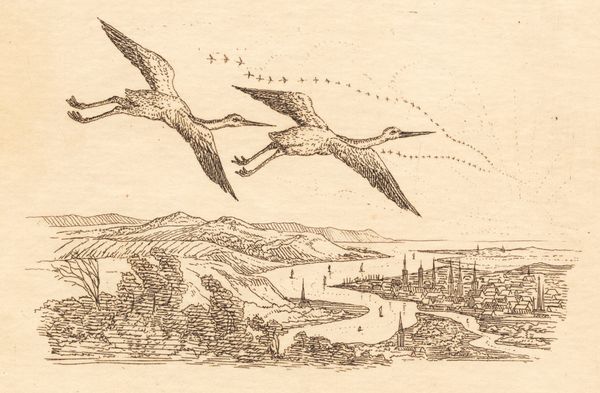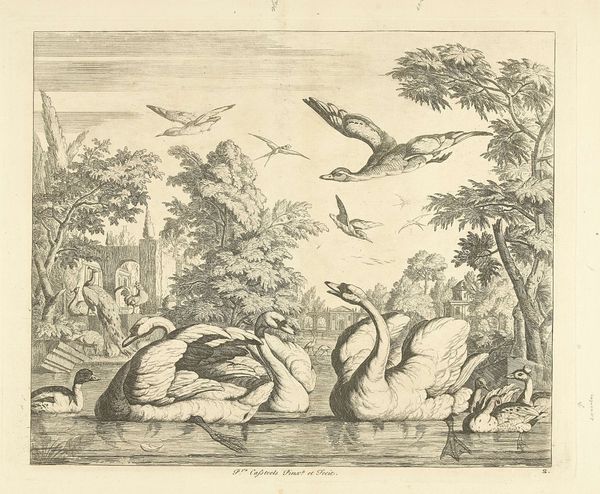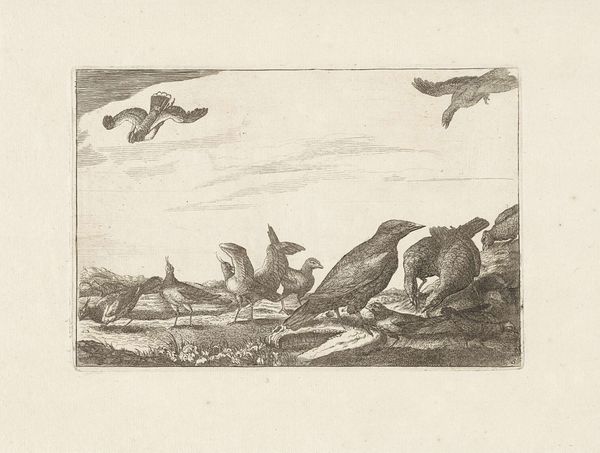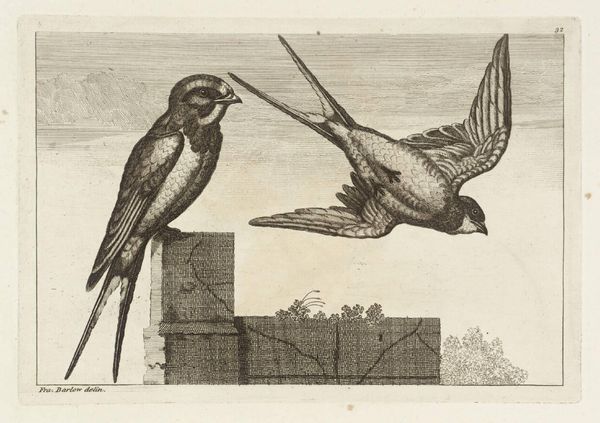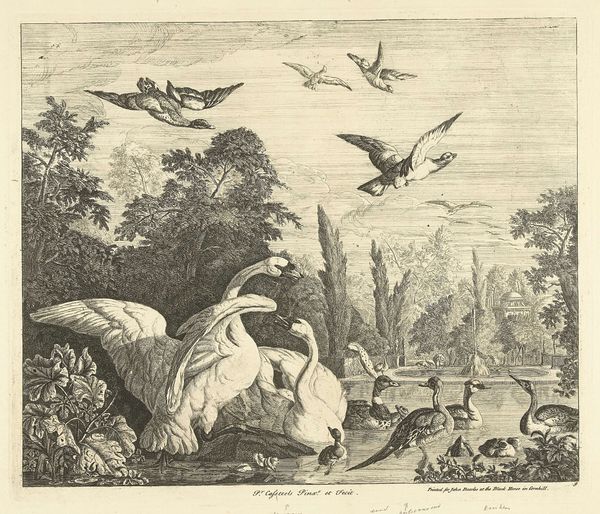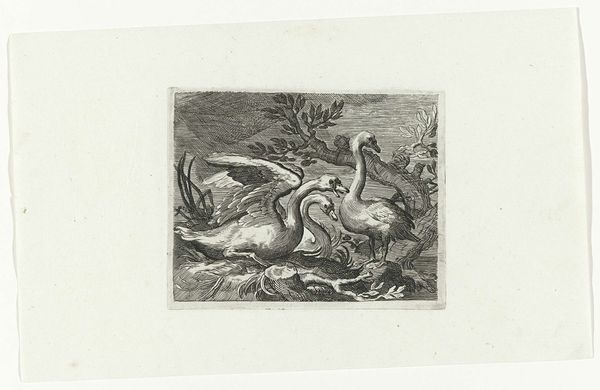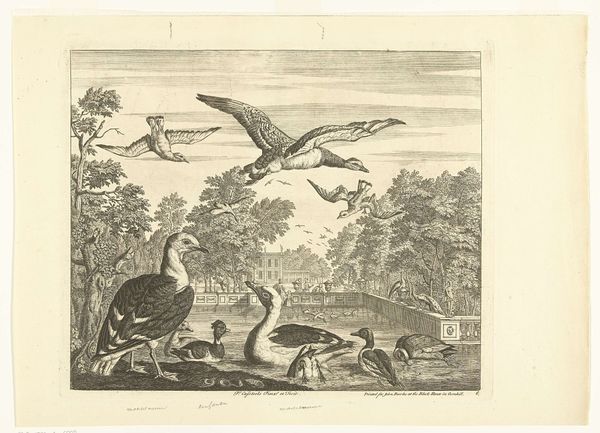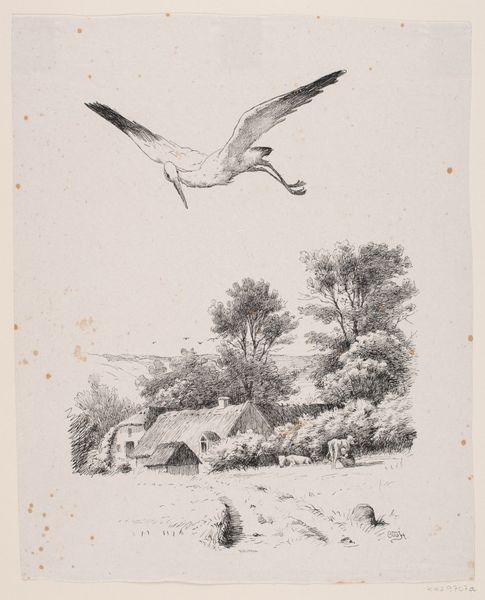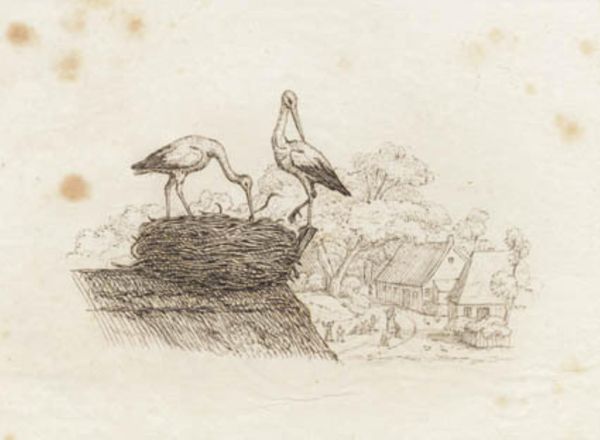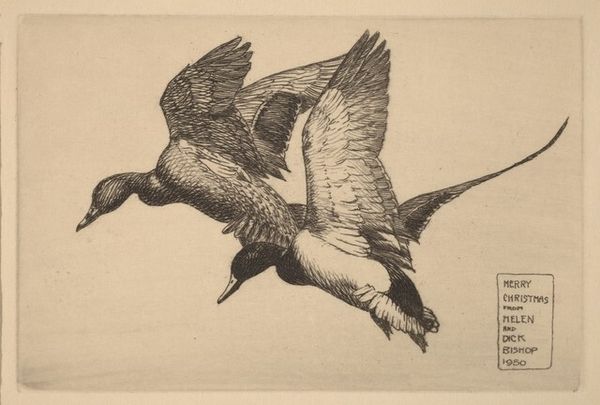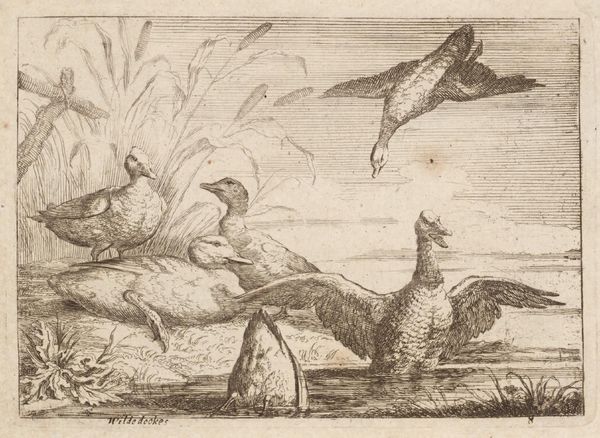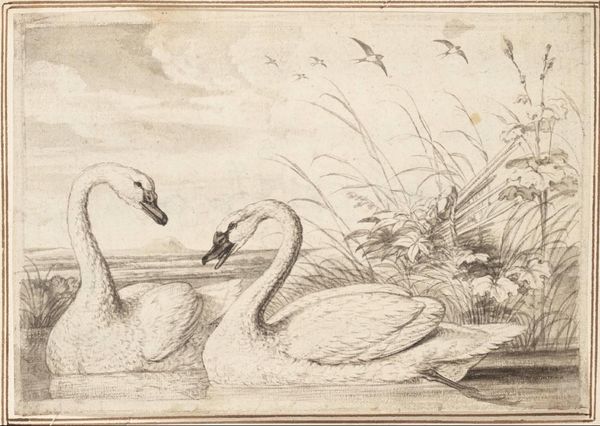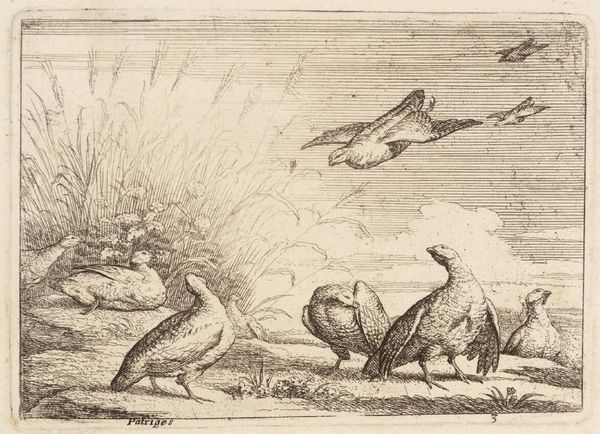
Illustration til "Halvhundrede Fabler for Børn" af Hey 1834
0:00
0:00
drawing, print, ink, engraving
#
drawing
# print
#
landscape
#
ink
#
cityscape
#
engraving
Dimensions: 147 mm (height) x 260 mm (width) (bladmaal)
Curator: Immediately, I'm struck by the dynamic composition and sense of whimsical flight. There’s almost a storybook quality to it. Editor: Indeed. We are looking at Martinus Rørbye’s "Illustration til \"Halvhundrede Fabler for Børn\" af Hey," dating back to 1834. It's an engraving, a print rendered in ink, held in the collection of the SMK, the National Gallery of Denmark. Rørbye, although celebrated for his landscapes, created this for a children's fable. Curator: It's more than just a landscape though. Notice how Rørbye positions the two prominent birds – storks, I presume – directly above the cityscape. They seem to symbolize freedom, or perhaps a lofty perspective, literally and figuratively, above human affairs. Editor: Storks carry potent cultural weight, right? Linked across societies with birth and good fortune. It's worth considering their trajectory too. Look at how Rørbye sketches their imagined path with dotted lines. The town below feels more confined and terrestrial by comparison. Curator: Exactly! The urban area seems to huddle, almost as if dwarfed by the natural world beyond – those gently rendered hills – and by the promise symbolized in those airborne birds. Even the river has an organic and unpredictable form versus the rigid human architecture nearby. Editor: I agree, there's tension between the organic and built environments. And I’m prompted to consider the social implications too. In 1834, illustrated children’s literature was beginning to solidify its position as a vehicle of both entertainment and pedagogy. So the question becomes, what societal lessons are implied? Curator: Perhaps something around appreciating nature or the allure of exploration? Or perhaps the potential for those on high to consider and care for the happenings and structures of those below? This drawing, by embracing imagined and symbolic imagery, feels incredibly powerful in transmitting universal human concepts about perception. Editor: And of social structures as well, no doubt! What seemed initially simple reveals itself to be a multilayered artwork—concerned not just with aesthetics, but with establishing moral positions through a child's lens. Curator: Absolutely, seeing it with new depth from your observations! Editor: A welcome observation. Thank you for bringing attention to these intriguing features.
Comments
No comments
Be the first to comment and join the conversation on the ultimate creative platform.
